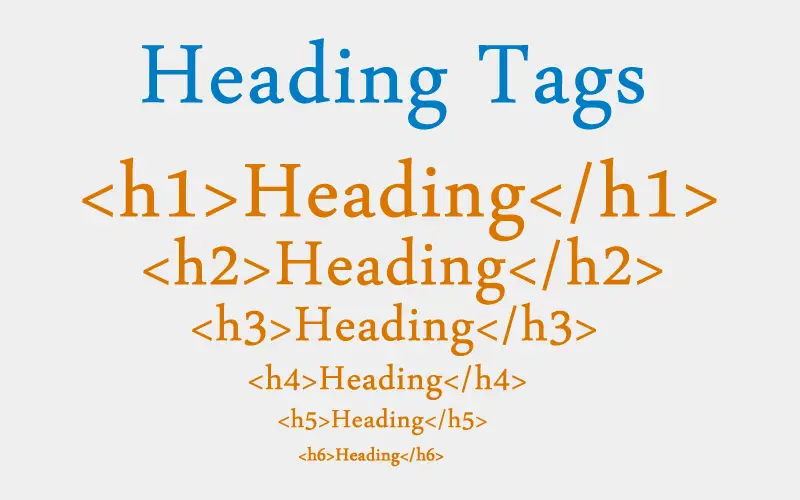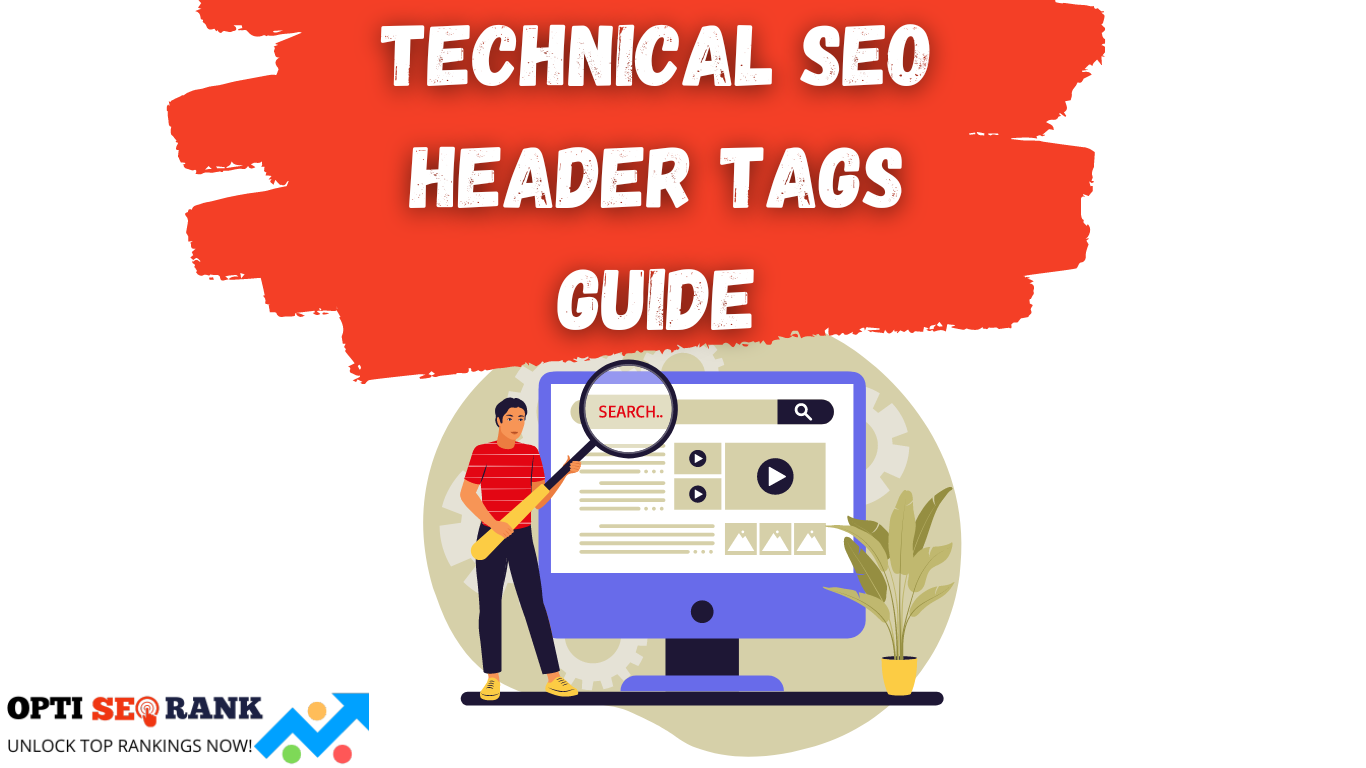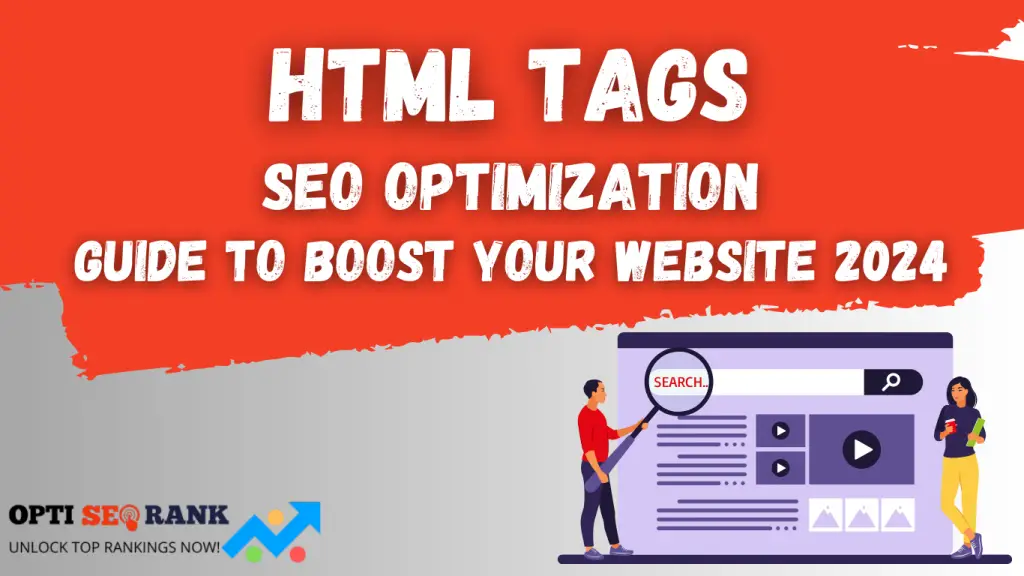Technical SEO header tags are critical for structuring web content and enhancing search engine visibility in 2024. They improve user experience and boost ranking.
Header tags (H1, H2, H3, etc. ) Help organize content hierarchically. Search engines use them to understand page structure and relevance. Using header tags properly ensures that your content is easily navigable and user-friendly. Clear, descriptive headers can improve your site’s SEO performance.
In 2024, optimizing header tags remains essential for maintaining competitive search rankings. Avoid overstuffing keywords and focus on clarity. Well-structured headers not only aid SEO but also enhance readability. This makes your content more engaging and accessible for users. Proper header tag use is a cornerstone of effective technical SEO.
Introduction To Header Tags

Header tags are vital for structuring web content. They help organize information. They improve readability and enhance SEO. In 2024, header tags continue to be crucial.
Importance For Seo
Header tags improve search engine understanding. They signal the importance of content sections. This boosts keyword relevance.
Search engines use headers to index content better. Proper use can increase your site’s visibility. This leads to more traffic and higher rankings.
Basic Structure
Header tags range from
to
. Each tag has a specific purpose.
- – Main heading of the page.
- – Subheadings for major sections.
- – Subsections within
sections. - to
– Further subdivisions.
Use only one
per page. This ensures clarity and focus.
| Header Tag | Usage |
| Page Title | |
| Major Sections | |
| Subsections | |
| Sub-subsections |
Evolution Of Header Tags

Header tags are essential in Technical SEO. They help structure your content. Over the years, their roles have evolved. This evolution has impacted SEO strategies significantly.
Changes Over The Years
Originally, header tags were simple. They defined headings and subheadings. Search engines used them to understand the content. The typical structure included
for the main title and
to
for subheadings.
With time, their role expanded. Search engines became smarter. They started using header tags for ranking purposes. This change led to new SEO practices. Proper use of header tags became crucial for ranking.
Current Trends
In 2024, header tags are more important than ever. They not only organize content but also improve user experience. Search engines now focus on semantic relevance. Properly structured header tags help achieve this.
Current trends include:
- Using
only once on each page - Ensuring
to
follow a logical order - Incorporating keywords naturally within header tags
- Focusing on user intent and readability
These trends help improve search engine ranking. They also enhance the user experience on your website.
Best Practices In 2024
In 2024, mastering Technical SEO Header Tags remains crucial. Proper use of header tags can boost your website’s ranking. It helps search engines understand your content better. Adhering to best practices ensures your site remains competitive.
Optimal Tag Usage
Using header tags correctly is essential. Always start with an
tag for the main title. Use
tags for primary sections. Subsections should use
tags, and so on. Ensure your headers follow a logical hierarchy.
Here’s a quick guide:
- – Main title (use once per page)
- – Primary sections
- – Subsections
- – Nested subsections
Each header should contain relevant keywords. This helps search engines understand your content’s structure and relevance. Avoid keyword stuffing. Make sure the content remains readable and natural.
Common Mistakes
Avoid common mistakes with header tags. Here are a few:
- Skipping header levels. Always follow the sequence:
,
,
, etc. - Using multiple
tags. Limit it to one per page. - Overloading keywords in headers. Keep it natural.
- Using headers for styling instead of structure. Use CSS for styling.
Avoiding these mistakes ensures your content is both user-friendly and search engine optimized. Proper header tag usage can significantly improve your site’s SEO.
Impact On Search Rankings
Technical SEO header tags play a crucial role in search rankings. They help search engines understand the structure and content of a webpage. Proper use of header tags can significantly improve a site’s visibility and ranking.
Algorithm Insights
Search engines use algorithms to rank pages. Header tags signal the importance of content. For example, the
tag is for the main title. It’s the most important. Subheadings like
and
break down the content into sections.
Algorithms read these tags to grasp the hierarchy and relevance. They prioritize pages with well-structured headers. Proper header tags make it easier for search engines to index pages. This can lead to higher rankings.
Case Studies
Several case studies illustrate the impact of header tags on rankings. Let’s look at two examples:
| Website | Header Tag Usage | Ranking Improvement |
| Site A | Optimized Headers | 35% Increase |
| Site B | Poor Header Structure | No Improvement |
Site A optimized its headers, resulting in a 35% ranking increase. Site B did not, and saw no improvement. This shows the power of proper header tag usage.
- Optimized headers can significantly boost rankings.
- Poor header structure can hinder search engine indexing.
Incorporating header tags correctly is essential for SEO success in 2024.
Header Tags And User Experience
Header tags play a crucial role in shaping user experience on a webpage. They help organize content, making it easier to read and navigate. Let’s explore how header tags enhance user experience in 2024.
Readability Benefits
Header tags improve the readability of your content. They break down text into smaller sections. This makes it easier for users to scan and find information quickly.
- Structured Content: Header tags create a clear structure. Users can easily understand the hierarchy of information.
- Attention Grabbing: Important points stand out with header tags. This keeps readers engaged.
- Improved Focus: Smaller sections help readers focus. They don’t get overwhelmed by long paragraphs.
Accessibility Considerations
Header tags are vital for web accessibility. They help screen readers navigate content efficiently.
| Accessibility Feature | Description |
| Screen Reader Navigation | Screen readers use header tags to move through content. This helps visually impaired users. |
| Keyboard Navigation | Header tags aid in keyboard navigation. Users can jump between sections easily. |
By following proper header tag usage, you ensure your site is accessible to everyone. This not only improves user experience but also boosts your SEO ranking.
Tools For Optimizing Header Tags
Header tags are critical for technical SEO. They help search engines understand your content structure. Optimizing these tags can boost your search engine rankings. Various tools can assist in this task, making the process efficient and effective.
Top Seo Tools
Several tools are available to optimize header tags. Here are some of the best:
- Yoast SEO: This WordPress plugin is user-friendly and offers comprehensive SEO features.
- SEMrush: A powerful tool for keyword research and site audits, including header tags.
- Ahrefs: Known for its backlink analysis, it also excels in on-page SEO audits.
- Screaming Frog: This tool crawls your website and identifies issues with header tags.
Manual Vs Automated Methods
Optimizing header tags can be done manually or through automated tools. Each method has its own benefits.
| Manual Methods | Automated Tools |
| Gives full control over tag placement. | Saves time and identifies issues quickly. |
| Ideal for small websites. | Perfect for large websites with many pages. |
| Requires SEO knowledge. | User-friendly with minimal expertise needed. |
Both methods aim to achieve the same goal: better SEO performance. Choose the one that fits your needs best.
Advanced Techniques
Technical SEO is evolving in 2024. Using advanced techniques for header tags can enhance your site’s ranking. These techniques focus on improving the structure and readability of your HTML.
Semantic Html5
Semantic HTML5 tags help search engines understand your content better. They provide clear context and meaning. This improves your website’s SEO.
- : Defines the header section of a document or section.
- : Represents a self-contained composition.
- : Groups related content together.
- : Contains footer content like copyrights and links.
Using these tags organizes your content. It makes it easier for search engines to crawl and index your site.
Schema Markup
Schema Markup is a powerful tool for technical SEO. It provides search engines with more information about your content. This can improve your search engine results.
| Schema Type | Description |
| Product | Details about a product you offer. |
| Review | Ratings and reviews of a product or service. |
| Event | Information about upcoming events. |
| Recipe | Detailed steps and ingredients for a recipe. |
Adding schema markup makes your content more visible. It helps search engines display rich snippets.
Future Predictions
Technical SEO continues to evolve. In 2024, header tags will play a crucial role. Let’s explore the future predictions for technical SEO header tags.
Ai Integration
Artificial Intelligence (AI) is transforming SEO. AI tools will analyze header tags more efficiently. They will ensure tags match search intent.
AI can predict user behavior. This helps optimize header tags better. Tools like GPT-3 and BERT will become essential.
Expect AI to suggest keywords for header tags. These suggestions will improve rankings. Automated tools will save time and enhance accuracy.
Evolving Best Practices
Best practices for header tags are changing. In 2024, focus on user experience. Header tags should be clear and concise.
Use H1 tags for the main title. Subsequent tags should follow a logical order. This helps search engines understand your content.
Consider these evolving best practices:
- Use keywords naturally in header tags.
- Keep H1 tags unique for each page.
- Ensure H2 and H3 tags support the main topic.
Structured data will also impact header tags. Schema markup will provide better context. This will enhance search engine understanding.
Table: Key Changes In Header Tags For 2024
| Aspect | Current Practice | 2024 Prediction |
| AI Integration | Limited Use | Extensive AI Tools |
| Best Practices | Keyword Focus | User Experience Focus |
| Structured Data | Optional | Essential |
Frequently Asked Questions
How Do I Optimize Header Tags For Seo?
Use relevant keywords in header tags. Maintain a clear hierarchy (H1, H2, H3). Ensure each page has one H1. Make headers descriptive. Keep them concise.
Do Header Tags Matter For Seo?
Yes, header tags matter for SEO. They improve readability, structure content, and help search engines understand your page’s hierarchy.
When To Use H2 Vs H3?
Use H2 for main subheadings. Use H3 for sub-sections under H2. This improves readability and SEO.
What Is The Hierarchy Of Header Tags?
Header tags follow a hierarchy from H1 to H6. H1 is the highest level, used for main titles. H2 to H6 represent subheadings, with each level indicating decreasing importance. Using them correctly improves SEO and readability.
Conclusion
Mastering header tags in 2024 boosts your site’s SEO performance. Prioritize H1, H2, and H3 tags for clarity. Structure your content effectively to improve user experience and search engine rankings. Implement these tips and watch your site’s visibility soar. Stay ahead with well-optimized header tags for a successful digital presence.



